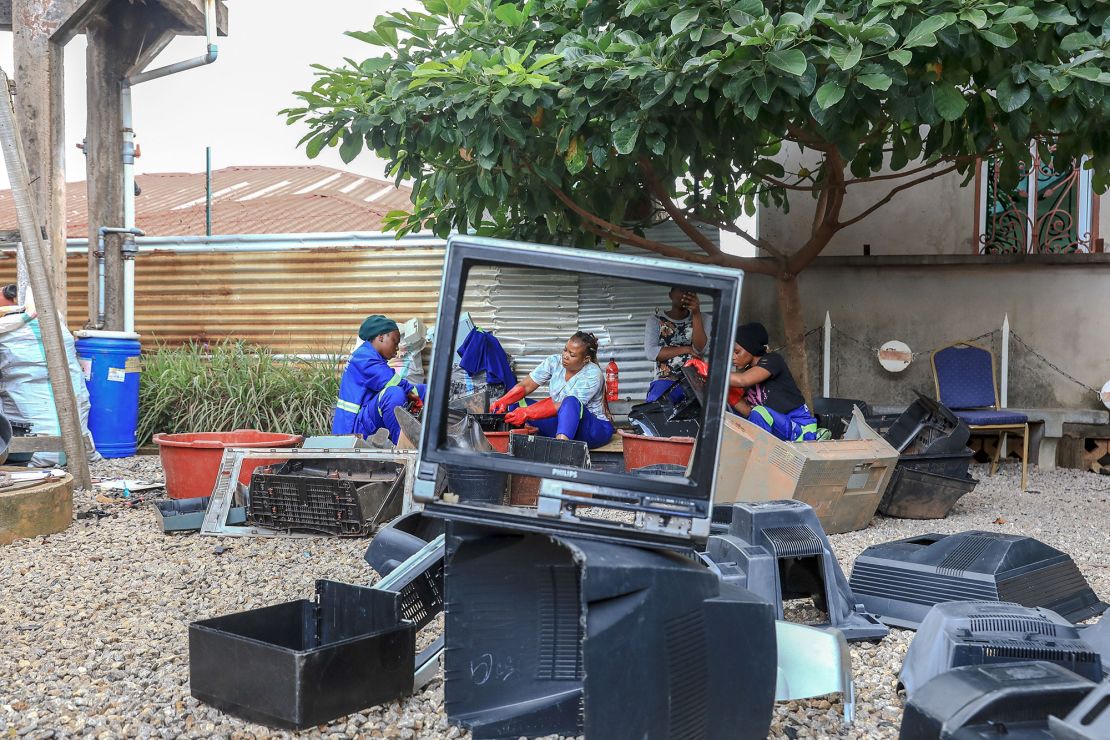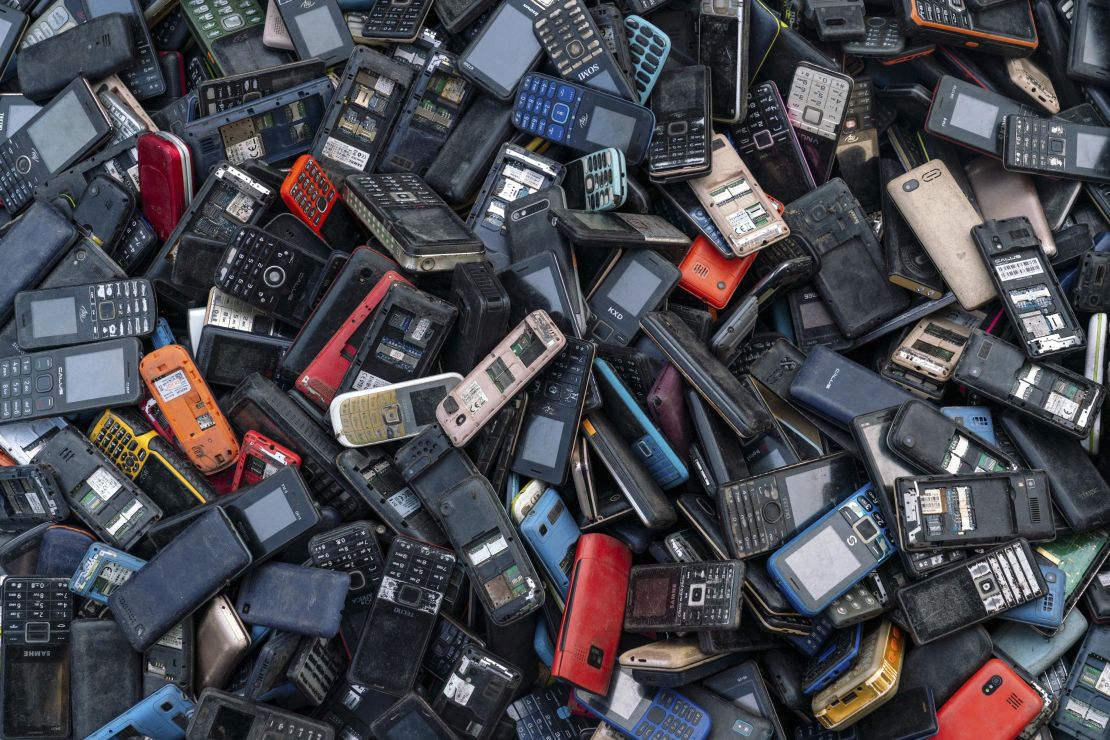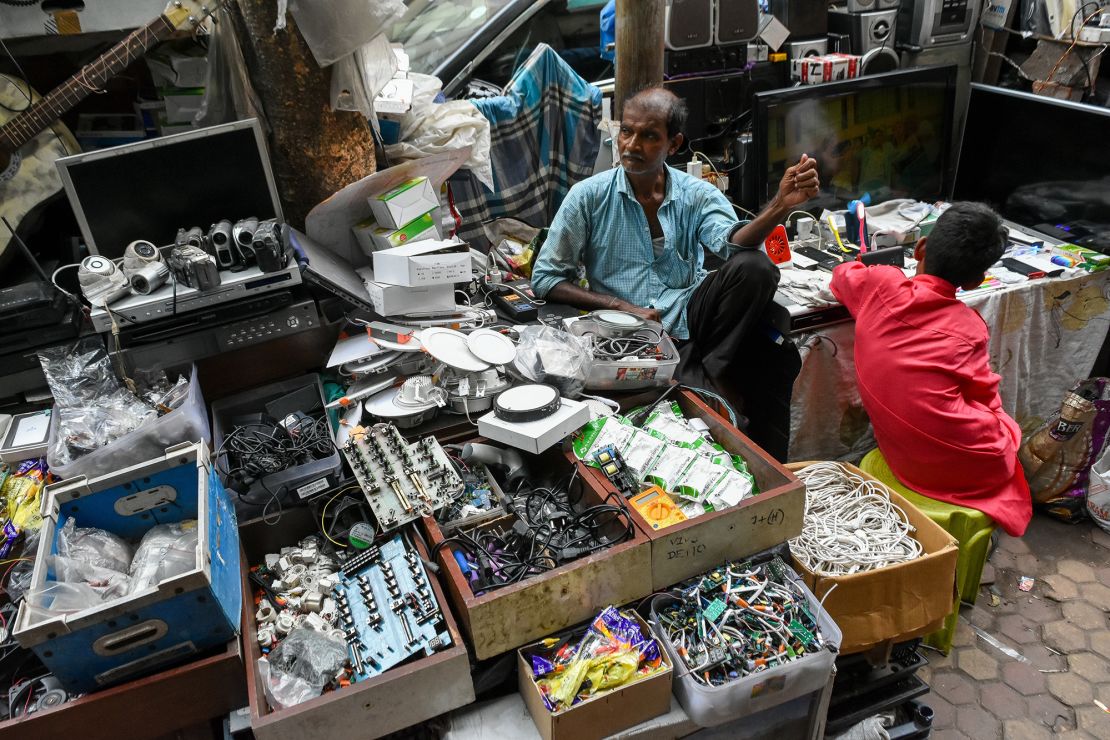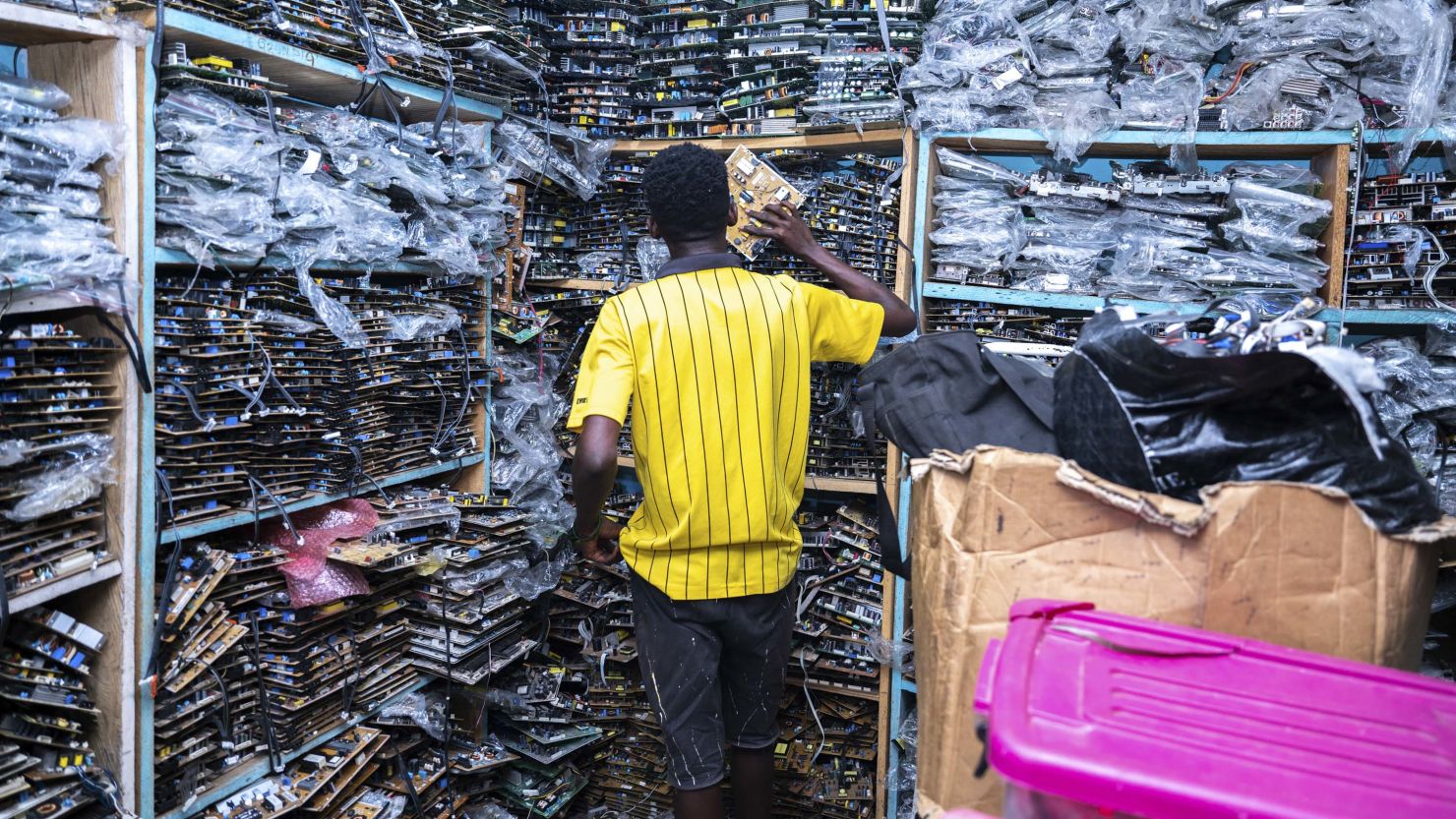From old cellphones to broken refrigerators and discarded e-cigarettes, global electronic waste has reached record highs and is growing five times faster than rates of recycling – bringing a host of health, environmental and climate problems, according to new analysis.
The numbers are staggering. In 2022, the world generated 62 million metric tons of electronic waste, also known as “e-waste,” according to the United Nations Global E-waste Monitor released Wednesday.
To put that in perspective, this waste could fill more than 1.5 million 40-metric-ton trucks which, if placed bumper-to-bumper, could form a line long enough to wrap around the equator.
E-waste is the umbrella term for any discarded product that has a plug or a battery and often contains toxic and dangerous substances, such as mercury and lead.
As the world becomes ever more reliant on electronics — and increasing amounts are being sold in developing countries for the first time — this hazardous waste stream is booming.
Global e-waste in 2022 was up 82% compared to 2010, according to the report, and is on track to rise a further 32% to reach 82 million metric tons in 2030.
Recycling capacity is not keeping pace.
Less than a quarter of e-waste (22.3%) produced in 2022 was documented as collected and recycled, according to the report. Since 2010, the growth of e-waste has outpaced the growth of formal collection and recycling by a factor of almost five, the report calculated.
Most e-waste ends up in landfills or part of informal recycling systems where the risks of pollution and harmful health impacts are high.
Small electronic gadgets such as toys, vacuum cleaners and e-cigarettes had particularly low recycling rates at around 12%, despite making up roughly a third of all e-waste, the report found.
Recycling rates tended to be highest for heavier and bulkier equipment like air conditioning units and TV screens because of their size and associated health concerns.


As the gap between e-waste generation and recycling capacity continues to grow, “the recycling rate could actually drop over the next few years,” Vanessa Gray, an e-waste expert at the International Telecommunication Union and a report author, told CNN.
The report predicts collection and recycling rates will decrease to 20% in 2030.
Jim Puckett, the founder and executive director of the Basel Action Network, an e-waste watchdog group, called the report’s conclusions “dismal.”
The results reveal that manufacturers are showing “a lack of duty of care” by failing to take accountability for what happens to their products at their end of life, Puckett, who was not involved with the report, told CNN.
“Manufacturers have to be dragged, kicking and screaming,” to make products that last, he said, “and not just design products for the dump, hoping they can sell us a new one as soon as possible.”
Manufacturers need clear plans for the removal, collection and recycling of the toxic and hazardous parts of their products, Puckett added.
As well as being an environmental problem, e-waste is also a climate problem.
Electronic devices require raw materials, including rare earth metals, that are extracted and processed in a highly energy-intensive process, mainly powered by fossil fuels. As demand ramps up, and people are persuaded to replace devices more often, the climate impact is growing.
Proper e-waste management and disposal cuts down global carbon pollution, the report found, by reclaiming metals and reducing the need to extract new raw materials.
“The more metals we recycle, the fewer have to be mined,” Kees Baldé, lead author of the report and senior scientific specialist at the UN Institute for Training and Research, told CNN.
Recycling metals from e-waste, instead of extracting new raw materials, avoided approximately 52 million metric tons of planet-warming emissions in 2022, according to the report.


Better management of e-waste such as refrigerators and air conditioners, which emit refrigerants like chlorofluorocarbons that are potent greenhouse gases, can also reduce the climate impact of this waste.
In addition, recycling can release value stored in these products. Metals worth an estimated $91 billion were embedded in the e-waste discarded in 2022, including $15 billion of gold, the report found.
Despite growing global concern about e-waste, only 81 countries had e-waste policies in 2023, according to the report, including European Union countries and India.
The US, which is among the largest producers of e-waste, has no federal law mandating the recycling of electronics although some states, including Washington DC, have implemented their own e-waste regulations.
But even where there is e-waste legislation, enforcement “remains a genuine challenge globally,” the report authors said in a statement.
One of the best ways to start to address the e-waste crisis is for wealthy countries to stop dumping e-waste in countries that don’t have the capacity to tackle them, Baldé said.
In low- and middle-income countries, e-waste — much of it imported from wealthy countries — is often handled by informal and unregulated recycling systems, where it cause severe health impacts and pollution.
“Simply put — business as usual can’t continue,” Baldé said. “This new report represents an immediate call for greater investment in infrastructure development, more promotion of repair and reuse, capacity building, and measures to stop illegal e-waste shipments.”




